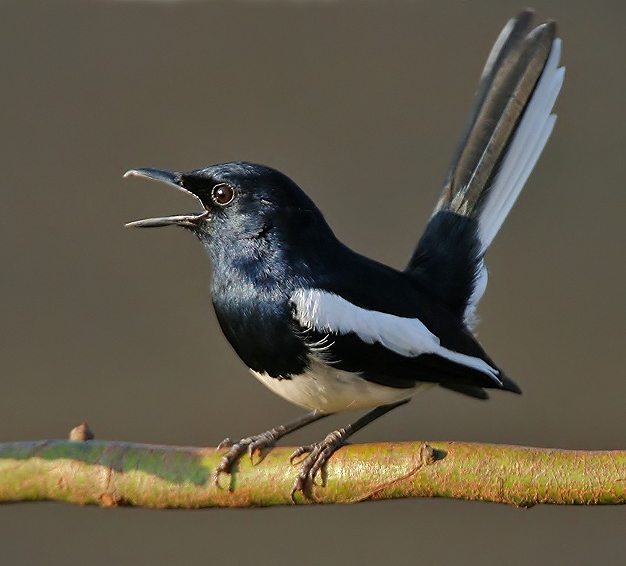 |
| Photo by J.M. Garg (Wikipedia) |
Common name:
oriental magpie-robin (en); pisco-daial (pt); shama dayal (fr); shama oriental (es); dajaldrossel (de)
Taxonomy:
Order Passeriformes
Family Muscicapidae
Range:
These birds are found in southern Asia, from eastern Pakistan, throughout India and Bangladesh and through Indochina into Indonesia, the Philippines and southern and south-eastern China.
Size:
The oriental magpie-robin is 19-23 cm long and weighs 29-42 g.
Habitat:
These birds are mostly found in tropical forests, both in dry and moist areas, but also in mangroves, scrublands, along rivers and streams, in rural gardens, plantations and in gardens and parks within urban areas. They are found from sea level up to an altitude of 2.000 m.
Diet:
They forage on the ground and in the foliage, mainly taking insects, but also nectar, earthworms, snails, small lizards and some plant matter.
Breeding:
Oriental magpie-larks breed in February-August. The nest is a loose cup made with grass and dried leaves, twigs, moss and roots. The nest is lined with plant fibres or grass and placed in a hole in tree, in a wall, in a building, a ledge under a roof, or sometimes also in thick scrubs, in forks of branches in a small tree, even in an old tin can. The female lays 3-5 pale greenish-blue eggs with reddish spots, which are incubated by both parents for 12 to 13 days. The is no information regarding the fledging period, but the chicks are raised by both parents and remain in the parental territory until the next breeding season.
Conservation:
IUCN status – LC (Least Concern)
This species is has a very large breeding range and is described as common to abundant, although generally uncommon in the Philippines. The population is suspected to be stable in the absence of evidence for any declines or substantial threats.







